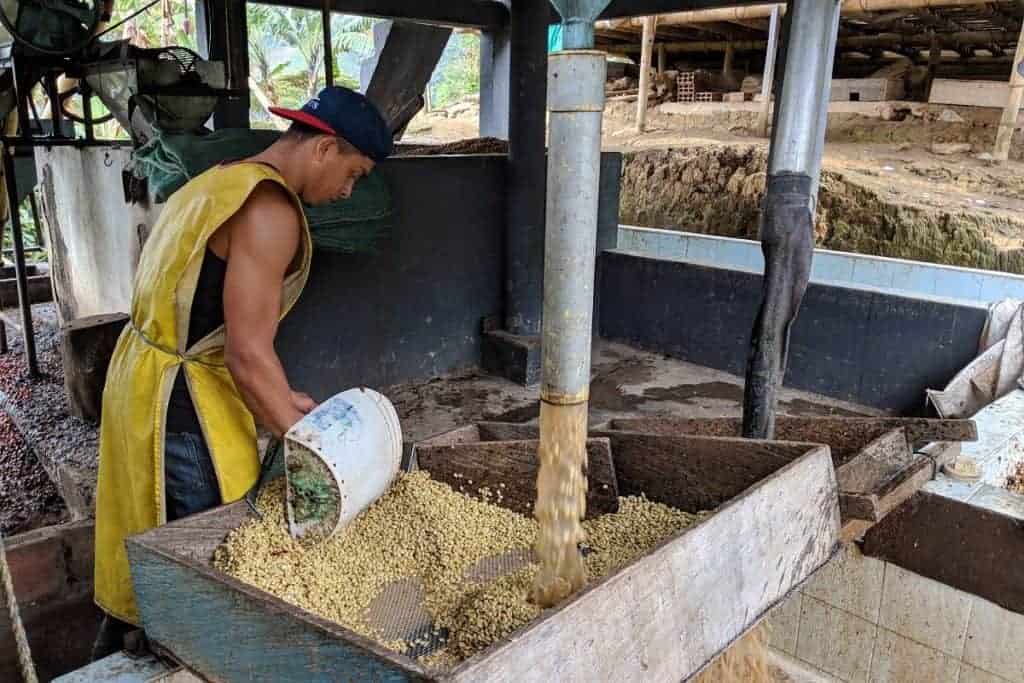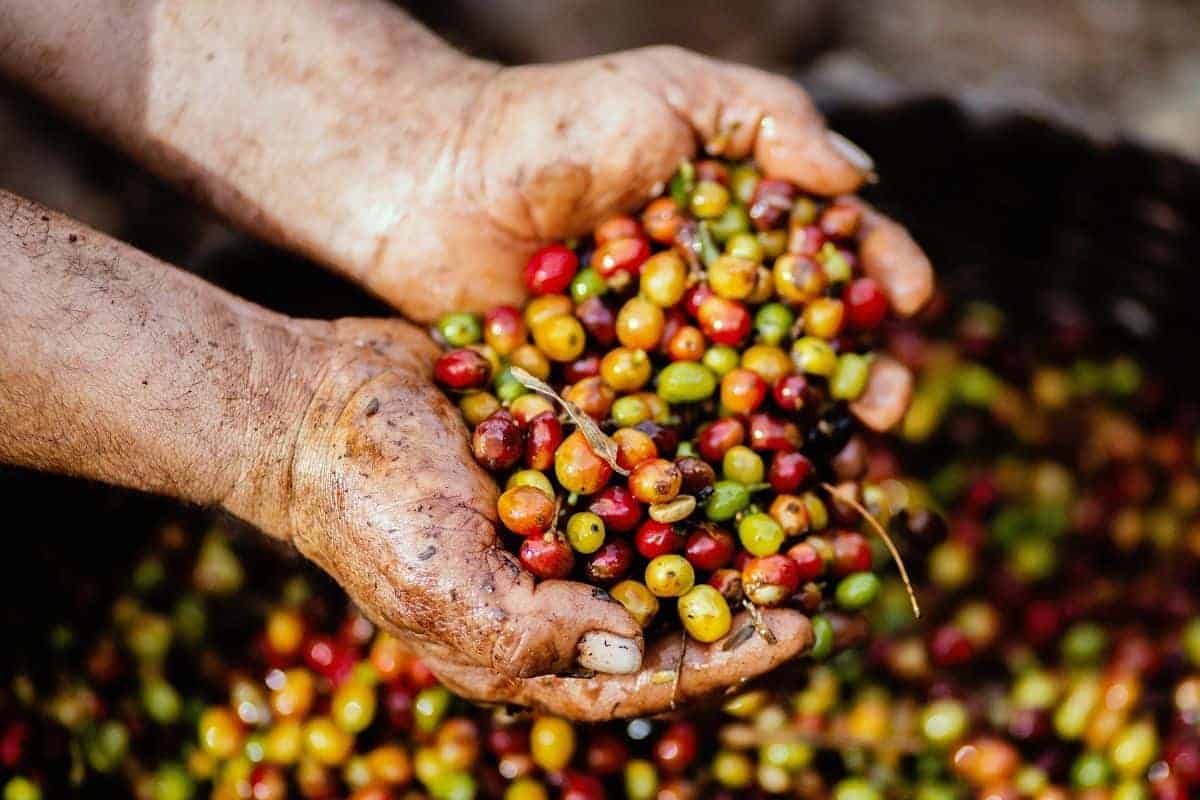
The coffee processing methods have an enormous effect on the flavor of the coffee beans. Since preferences of coffee taste is very subjective, it is essential to understand these methods if you want to learn how to make a good cup of coffee.
In case you have no idea, coffee processing takes places when coffee seeds are removed from the fruit. The most common and traditional ways are washed, natural, semi-washed and honey which we will be visiting in this article.
Special thanks to Finca La Florida, a small family-based coffee farm in Colombia.
Washed Coffee: The Most Common Method

Washed process is also known as the wet process.
It begins with sending fresh coffee cherry through a pulping machine that rips the skin and some of the mucilage off the cherry. Once this outer layer has been removed, the beans are sent to the fermentation tank. The beans sit in water for anywhere between a few hours to a couple of days, depending on the climate, equipment used, and the producer’s preference. After fermentation, coffee beans are washed and dried on the patio or the raised beds.
Find this Article Useful?
Like our Page to receive notifications on interesting articles such as this.
The flavor of the resulting coffee is more clean and “pure” than other methods which explains why most of the best coffee beans in Singapore are washed. Since it is de-pulped and washed right away, the washed coffee method highlights the true character of the coffee origins. Coffee in Colombia, Kenya, and Central America is usually fully washed as well.
Natural Coffee: The Original Method

Natural process, also known as the dry process, is one of the oldest coffee processing techniques and is very commonly used for places with little water.
Coffee cherries are picked, sorted, and immediately placed on raised drying beds or patios to dry its skin. When the skin of the coffee cherry becomes raisin-like, they are gathered for milling and extraction of its coffee beans.
The flavor of natural processed coffee leans towards fruity and sweet notes. When done well, natural processed coffee beans can bring incredible notes of blueberry and strawberry into your perfect cup of coffee, sometimes even wine-like notes. Unfortunately, poorly natural-processed coffee can taste dirty, sour, yeasty and over-fermented.
Natural processing is usually used for coffee beans in Brazil and Ethiopia.
Semi Washed

In between a washed coffee and a natural process coffee, there is another processing method: semi-washed (sometimes known as wet-hulled). This method is well known in Indonesian countries, especially in Sumatra.
In many ways, the semi-washed process resembles the washed method, but instead of being left to fully dry, the drying period of the coffee beans lasts just a day or two. After partial drying, beans are milled to remove a final, papery layer called parchment, and have returned to the drying facilities.
This method contributes to the earthiness, body, and low acidity that Singaporeans love.
Honey Processed: The Experiment

Honey processing, sometimes called the pulped natural or semi-dry, is practiced mostly by coffee producers.
Like a washed coffee, the coffee cherries are de-pulped. The skin is removed but the mucilage is allowed to remain. By experimenting the degree of pulp and the length of drying time results in different bean color and different taste profiles. The honey process is strongly associated with Costa Rica, El Salvador, and Panama.
Flavor Differences and Matter of Preferences
Coffee is very complex. There are many stages that need to happen before the coffee seeds become the drink we love.
If you are a budding home barista, here are the points you should note. If you prefer the clean and bright coffee with a fruitier taste, we recommend you to try washed processed beans. If you like sweeter, heavier bodied coffee, pay attention to natural processed coffee beans. For a much more acidic coffee with some unusual flavor profiles, you can try pulped-natural coffee beans.
What type of coffee process methods do you like, share with us in the comment section below!
